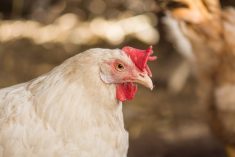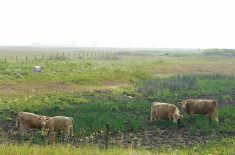After over four years’ publicly funded work to develop an updated national code of practice for livestock transport for Canada, the National Farm Animal Care Council has called a halt.
In an information update dated May 1, NFACC said its board has now decided “no further action will be taken” by the council to update the 2001 Transport Code.
NFACC, a division of Animal Health Canada, in December 2018 had started work to update the Transport Code — which meant setting up a new multi-species code covering animals from 14 of its separate national on-farm codes of practice.
Read Also

Ample supplies and improved livestock sector to boost Canadian feed sector: FCC
Abundant feed grain supplies and improved profitability for the livestock sector should support strong feed demand and sales through the winter, says a new report from Farm Credit Canada.
Since then, however, the Lacombe, Alta.-based organization said, it has had to take into consideration the February 2019 update to federal regulations governing transportation of animals in Canada.
The federal regulations having been “materially and significantly amended,” and “evergreen interpretive guidance” added, made it “difficult to envision the role and purpose of an updated Code,” the council said.
After that came the COVID-19 pandemic, which NFACC said halted all in-person meetings and required its working groups and code development committee to meet exclusively online, which “impeded the relationship-building opportunities and open dialogue that in-person meetings offer.”
On top of that, the Transport Code was the first to be set up using NFACC’s code development process (CDP) but not intended for on-farm use. It included care of animals during transportation as well as when offloaded at certain intermediary sites.
Furthermore, NFACC said, the plan to update the Transport Code had been initiated by the council itself, rather than by any national stakeholder group or other primary stakeholders — “which has led to additional challenges” in following the council’s usual CDP.
And since there’s no one national organization devoted to livestock and poultry transport, there would be no lead body to take up the roles and responsibilities needed to shepherd a new code to its conclusion.
‘Disappointed’
The update process for a new Transport Code was funded by the AgriAssurance program via the former federal-provincial Canadian Agricultural Partnership (CAP) policy framework, and NFACC said development of the new Transport Code was always expected to take as long as that program allowed.
But by August last year, NFACC said, it had “become apparent” that a finalized transportation code wouldn’t be achievable by the time CAP expired at the end of March this year.
NFACC in August called a pause in the code development process, and it said with the remaining time and funding under CAP, it would instead pursue a risk assessment and “collaboration planning exercise.”
That two-phase data collection process ran from last November to February this year, NFACC said. The risk assessment looked at “potential options and the inherent risks” with different courses of action, while the planning exercise looked at the “top priorities” of the council and of project stakeholders in weighing the next steps.
Taken together, NFACC said May 1, a “careful review” of the data “supported the conclusion that the Code update could not proceed.”
“We recognize that many of you are disappointed in this development, and we understand and share in that disappointment,” NFACC said.
“While the destination wasn’t what we envisioned when we started down this road in 2018, nevertheless, there were many positive aspects that emerged from the project,” the council said, noting the new alignment of the transportation sections of 11 on-farm codes of practice with the updated federal Health of Animals Regulations.
The work toward a new Transport Code also provided “opportunity for stakeholders to participate and collaborate” and the top-of-mind survey and report at the outset have “helped NFACC in gaining greater awareness of current evolving concerns of stakeholders and interested parties.”
NFACC said the process also led to “greater sharing of inter-industry information and enhanced communication” and “affirmation of NFACC’s role and the guardrails in place to support CDP work.”
NFACC’s work schedule over the next five years includes updates of its code of practice for beef cattle, code for sheep, and code for hatching eggs, breeders, chickens and turkeys. — Glacier FarmMedia Network

















